Where is the market headed?
We saw volatile markets today, giving up some of the gains achieved over the last few sessions. The day’s trading started with significant news from Japan, where the Japanese market was seeing a sharp decline.
The rise in Japanese yields is a key concern because it impacts the carry trade, which typically provides cheap stimulus liquidity to the rest of the world. If this carry trade becomes expensive and unwinds, all asset classes feel the pressure.
This unwinding pressure is also visible in US tech stocks and the crypto world. Despite all this, India still stood pretty strong today, holding within its reasonable range.
The expiry day didn’t offer any significant upward push, but considering the global backdrop, today’s fall appears to be temporary, and it doesn’t look like we are falling as hard as the rest of the world, at least so far.
Market Overview
Looking at the charts, the Nifty gave up the entire gain of the previous day, ending down 0.4%. Compared to other global markets, this is not a remarkably big fall, which shows our continued resilience.

Nifty Next 50
However, the Nifty Junior saw a much steeper cut at 0.73%, losing what it had gained over the last five sessions.

Nifty Mid and Small Cap
Midcaps were also down 0.62%, losing yesterday’s gains and the gap-up opening. Small caps experienced a bigger fall of minus 1.02%, giving up about four or five days of gain.

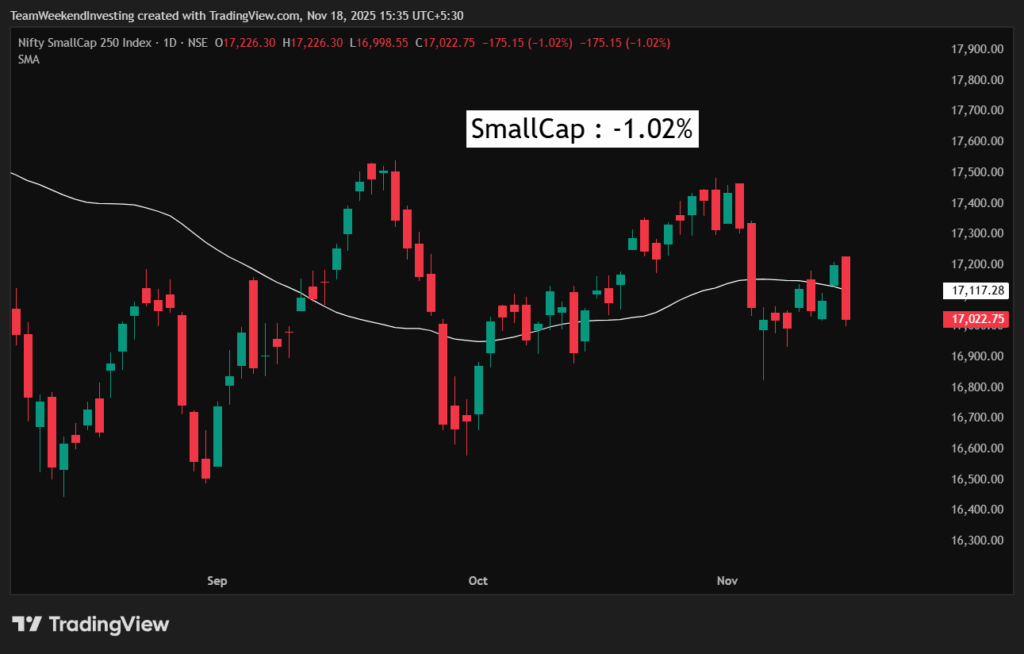
Bank Nifty
Banks, however, were very flat at minus 0.11%. It is clear across these indices that the banking sector remains the strongest part of the market.

GOLD
Precious metals had a very quiet day, with Gold absolutely flat at minus 0.07%, still hugging its average.

SILVER
Silver was slightly up at 0.62%.

Advance Decline Ratio
The advance-decline ratio was very much a flatline day, with advances starting poorly and staying low, while declines started strong and maintained that strength. This means the entire day was singularly in favor of the bears, with no significant change during the session.

Heat Maps
Almost nothing was spared today, including IT stocks, FMCG stocks, steel and cement, infrastructure stocks, and banking and finance. The only exceptions that gained were Axis Bank and Bharti Airtel, with Bharti Airtel making new highs even in this tough market environment. Reliance was flat.
In the Nifty Next 50 space, there was a lot of red, with Adani stocks, DLF, Lodha, Hindustan Zinc, Jindal Steel, and LTIM all down. However, there were some greens in Enrin, ABB, and Pidilite, along with HAL and Hyundai.
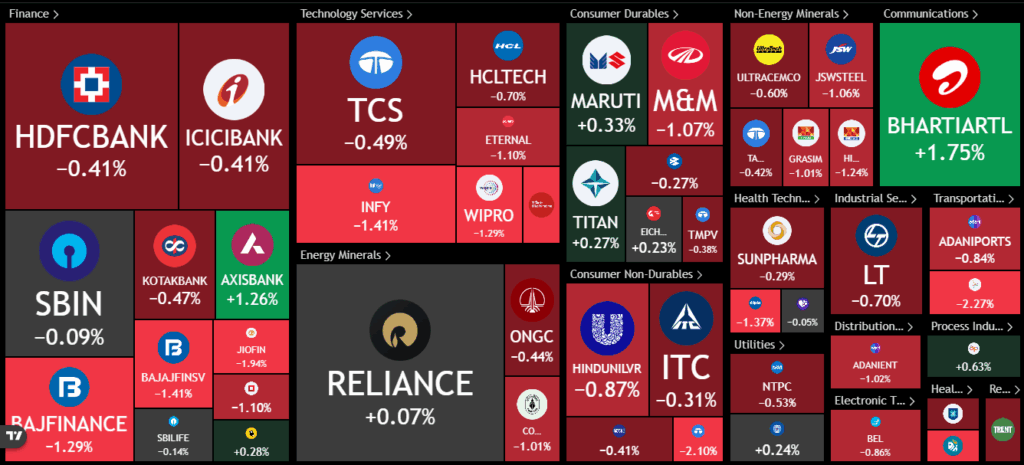
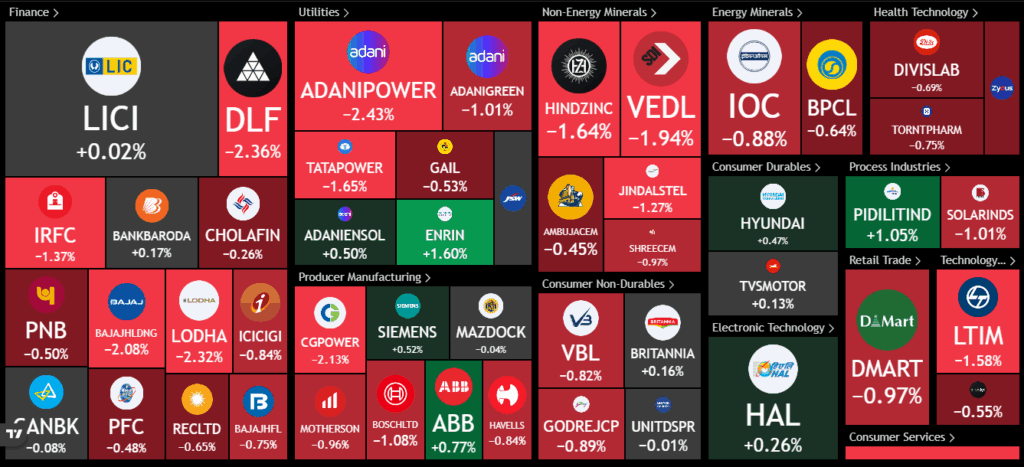
Mover Of The Day
The Mover of the Day was Bombay Burma Trading Company (BBTC), which surged 10% following the company’s announcement that it had terminated an agreement with MSTC for the e-auction of immovable properties.
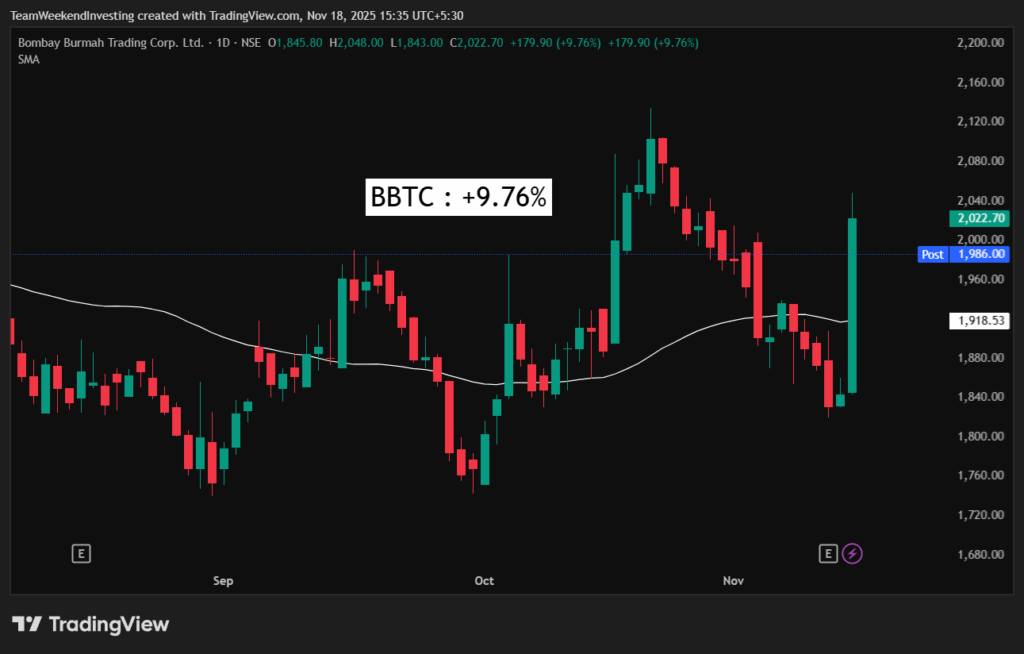
Sectoral Overview
In sectoral trends, it was almost a mirror image of yesterday, with all sectors down. Real Estate moved down the hardest at 1.9%. Nifty IT was down 1.1%, Metals down 1%, and Commodities and Pharma also lost ground at 0.7% and 0.6%, respectively, marking a rough day for gains. Over the last one month, the only sectors that have shown good gains are PSU banks at nearly 11% and Oil & Gas stocks at nearly 6%; the rest are all marginal.
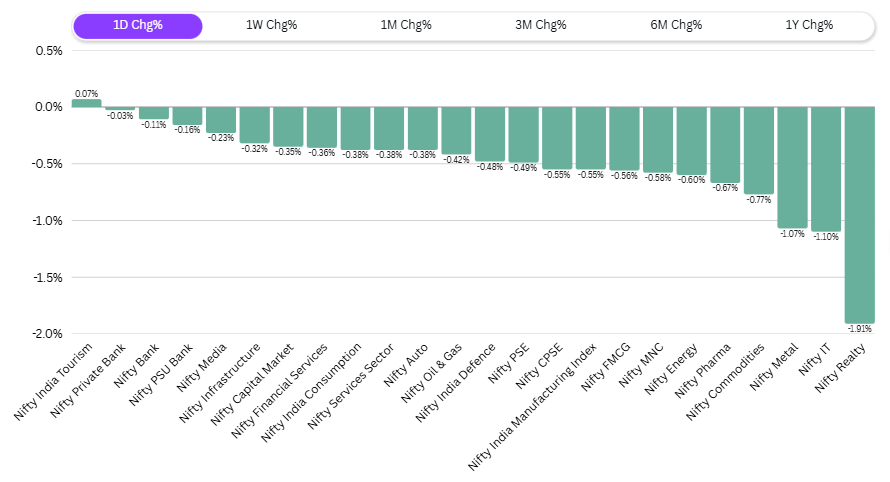
Sector of the Day
Nifty Realty Index
The rally in the real estate space, which began at the end of September and beginning of October, seems to be giving way now, with the index reverting back to its average. Stocks like Sobha, Lodha, DLF, Brigade, and Anant Raj all lost ground today.


U.S. Market
In the previous session, US markets were weak. The S&P 500 was 1% down, the Dow Jones 1.2% down, and the Nasdaq nearly 0.9% down. The Russell 2000 was hit very hard, down 2%, which is not a common occurrence.
Some of the stocks leading the down moves were Booking Holdings Inc. (4.8%), American Express (4.4%), Capital One, Qualcomm, and MetLife (all down between 3% and 4%). Some of these stocks could potentially be in the Weekend Investing U.S. portfolio, and the standard disclaimer applies.

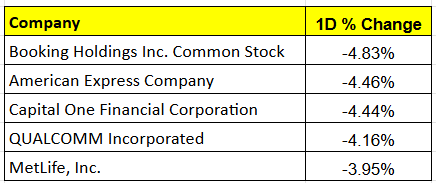
Tweet Of The Day
The Tweet of the Day showed the historical chart of Bitcoin over the last 13 or 14 years. It interestingly revealed a pattern where every substantial drop in Bitcoin’s price has been around 80% to 85% (e.g., 81% in 2012, 83% in 2013, 87% in 2015, and other drawdowns of 73%, 79%, and 81%).
The last major drop was 80%, and if it were to drop 80% again, the price would come down to about $25,000. This consistent 80% drawdown pattern is almost mathematical, suggesting the possibility that the algorithms running the Bitcoin platform might be designed to automatically resolve once this drawdown is achieved.
From this historical perspective of six such drops, a strategy could be to invest “lottery money” in Bitcoin if it drops 80%. This would be a low-risk strategy just to test if this mathematical series continues.
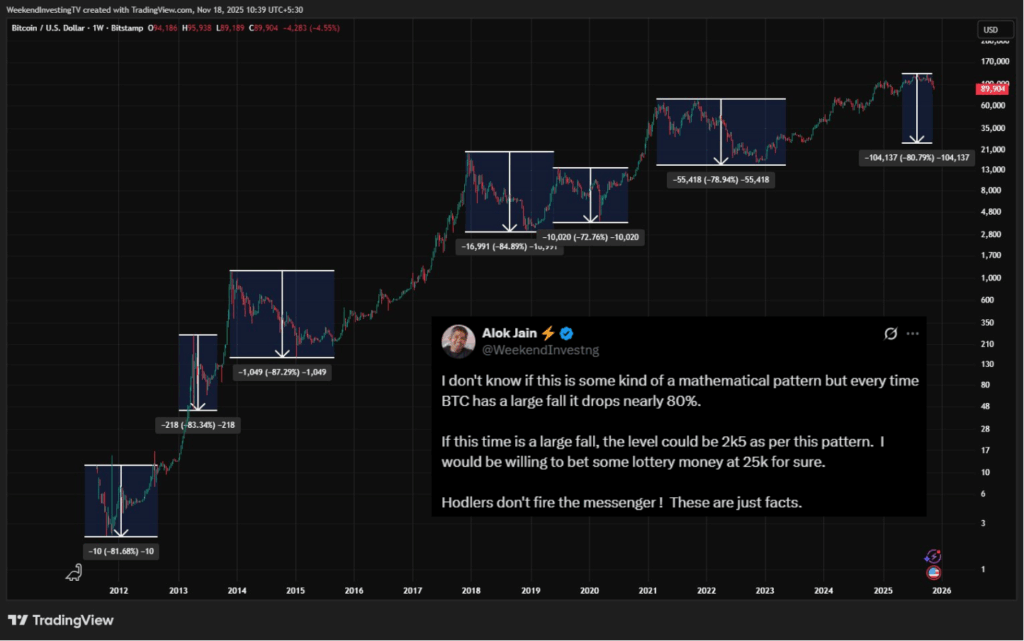
Another tweet, from Invest Mutual, relayed a conversation with a wealthy investor who said that instead of looking for Alpha (market-beating returns), he was focused on preserving the wealth he had painstakingly accumulated. This confirms that for many wealthy individuals (HNIs), wealth does not equate to taking higher risks; their priority is not to lose what they have built. Diversifying is most important to them.
This is a key difference from a smaller retail investor who is looking for rapid growth and prioritizes Alpha, as they have more time to recover losses. Older investors and HNIs, typically in the second half of their careers, prioritize wealth preservation, even if it means accepting a lower Alpha than the market. This outlook is something that younger investors may not fully appreciate but is completely understandable for those who have built significant wealth over time.








